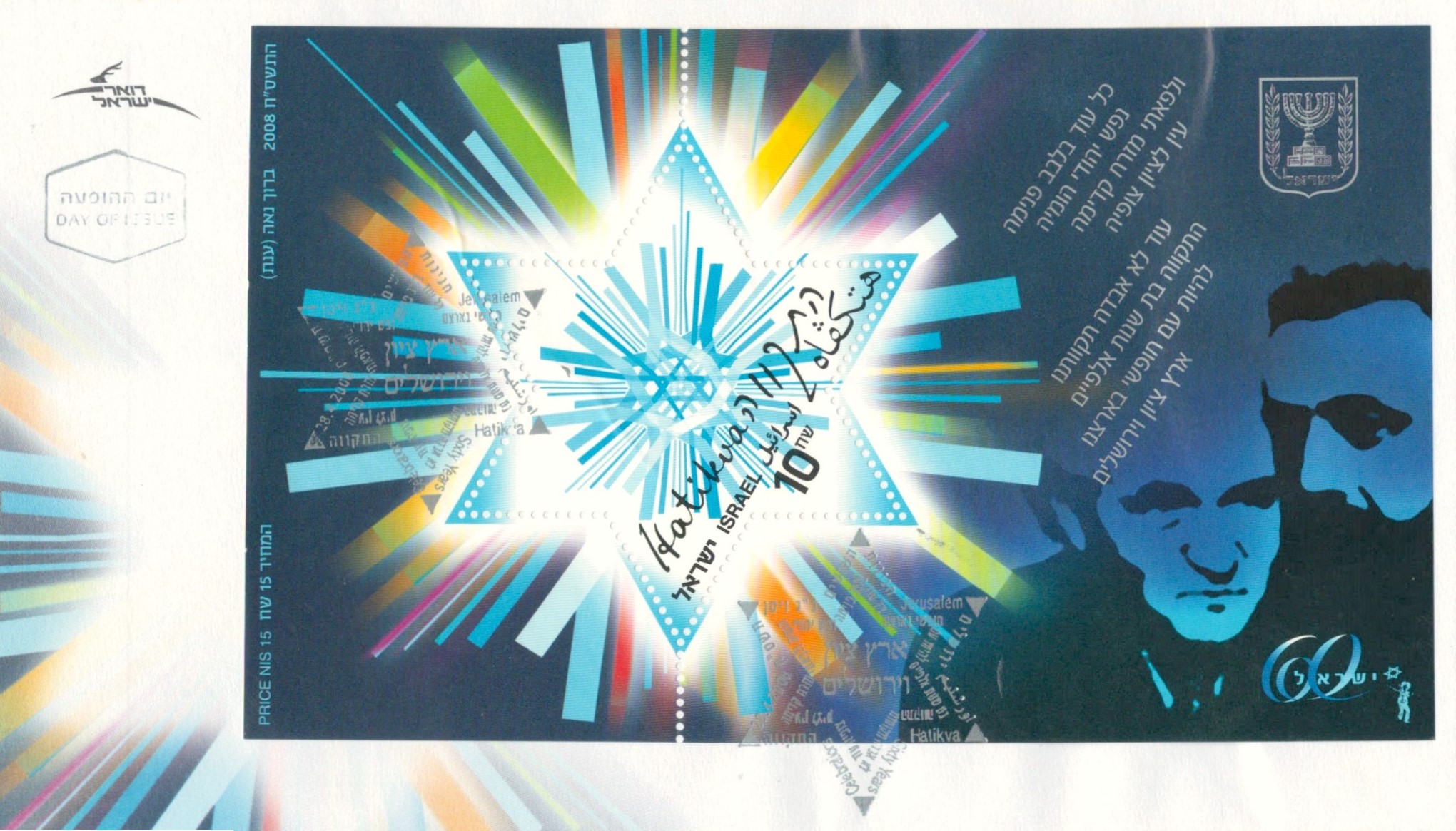Date of Issue : 28 Apr 2008
Postmark : Israel
Denomination : 10 ₪
Stamp Size : 85 mm x 140 mm
Printing Process : Offset Lithography
Hatikva, which means The Hope, was officially adopted as Israel's national anthem in 2004, although it had been an important symbol for the Jewish people long before that. The anthem expresses the Jewish longing for a homeland in Zion and Jerusalem. The first draft of Hatikva was written by Naftali Hertz Imber in 1878 in the Romanian city of Iasi. The original version of the poem included nine stanzas which joined to form one complex, 132-word sentence describing the experience of national hope.
Shmuel Cohen, a 17-year-old youth who immigrated to Israel from Romania in 1887, successfully joined the poem with the melody of the refrain of a Romanian coachmen's song called "Carul Cu Boi" (The Wagon and the Bulls). The new song was first sung at gatherings of Rishon Lelion farmers and within two years it had become the labourers' favourite song when heading out in the morning to work in the new town of Rehovot.
Commemorating the 120th anniversary of Hatikva in 2008, the single stamp in this issue is perforated in the unique shape of the Star of David, a widely recognised symbol of Judaism, named after King David of ancient Israel. Israel also celebrated 60 years of its independence in 2008.
₪ = Israeli new shekel
